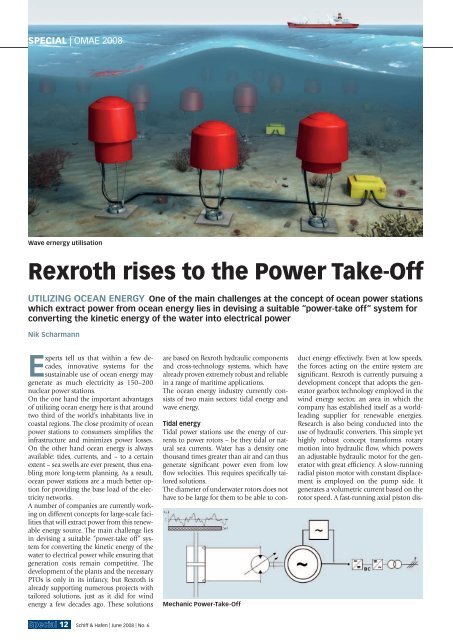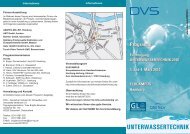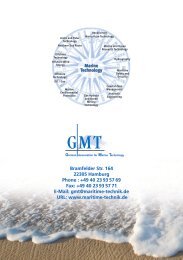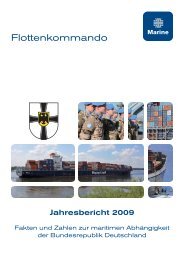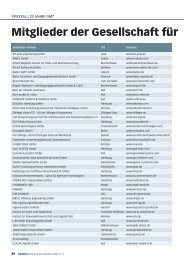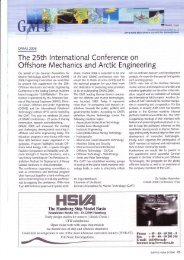Offshore Technology
Offshore Technology
Offshore Technology
Create successful ePaper yourself
Turn your PDF publications into a flip-book with our unique Google optimized e-Paper software.
SPECIAL | OMAE 2008<br />
Wave ernergy utilisation<br />
Rexroth rises to the Power Take-Off<br />
UTILIZING OCEAN ENERGY One of the main challenges at the concept of ocean power stations<br />
which extract power from ocean energy lies in devising a suitable “power-take off“ system for<br />
converting the kinetic energy of the water into electrical power<br />
Nik Scharmann<br />
Experts tell us that within a few decades,<br />
innovative systems for the<br />
sustainable use of ocean energy may<br />
generate as much electricity as 150–200<br />
nuclear power stations.<br />
On the one hand the important advantages<br />
of utilizing ocean energy here is that around<br />
two third of the world‘s inhabitants live in<br />
coastal regions. The close proximity of ocean<br />
power stations to consumers simplifi es the<br />
infrastructure and minimizes power losses.<br />
On the other hand ocean energy is always<br />
available: tides, currents, and – to a certain<br />
extent – sea swells are ever present, thus enabling<br />
more long-term planning. As a result,<br />
ocean power stations are a much better option<br />
for providing the base load of the electricity<br />
networks.<br />
A number of companies are currently working<br />
on different concepts for large-scale facilities<br />
that will extract power from this renewable<br />
energy source. The main challenge lies<br />
in devising a suitable “power-take off“ system<br />
for converting the kinetic energy of the<br />
water to electrical power while ensuring that<br />
generation costs remain competitive. The<br />
development of the plants and the necessary<br />
PTOs is only in its infancy, but Rexroth is<br />
already supporting numerous projects with<br />
tailored solutions, just as it did for wind<br />
energy a few decades ago. These solutions<br />
Special 12 Schiff & Hafen | June 2008 | No. 6<br />
are based on Rexroth hydraulic components<br />
and cross-technology systems, which have<br />
already proven extremely robust and reliable<br />
in a range of maritime applications.<br />
The ocean energy industry currently consists<br />
of two main sectors: tidal energy and<br />
wave energy.<br />
Tidal energy<br />
Tidal power stations use the energy of currents<br />
to power rotors – be they tidal or natural<br />
sea currents. Water has a density one<br />
thousand times greater than air and can thus<br />
generate signifi cant power even from low<br />
fl ow velocities. This requires specifi cally tailored<br />
solutions.<br />
The diameter of underwater rotors does not<br />
have to be large for them to be able to con-<br />
Mechanic Power-Take-Off<br />
duct energy effectively. Even at low speeds,<br />
the forces acting on the entire system are<br />
signifi cant. Rexroth is currently pursuing a<br />
development concept that adopts the generator<br />
gearbox technology employed in the<br />
wind energy sector, an area in which the<br />
company has established itself as a worldleading<br />
supplier for renewable energies.<br />
Research is also being conducted into the<br />
use of hydraulic converters. This simple yet<br />
highly robust concept transforms rotary<br />
motion into hydraulic fl ow, which powers<br />
an adjustable hydraulic motor for the generator<br />
with great effi ciency. A slow-running<br />
radial piston motor with constant displacement<br />
is employed on the pump side. It<br />
generates a volumetric current based on the<br />
rotor speed. A fast-running axial piston dis-


